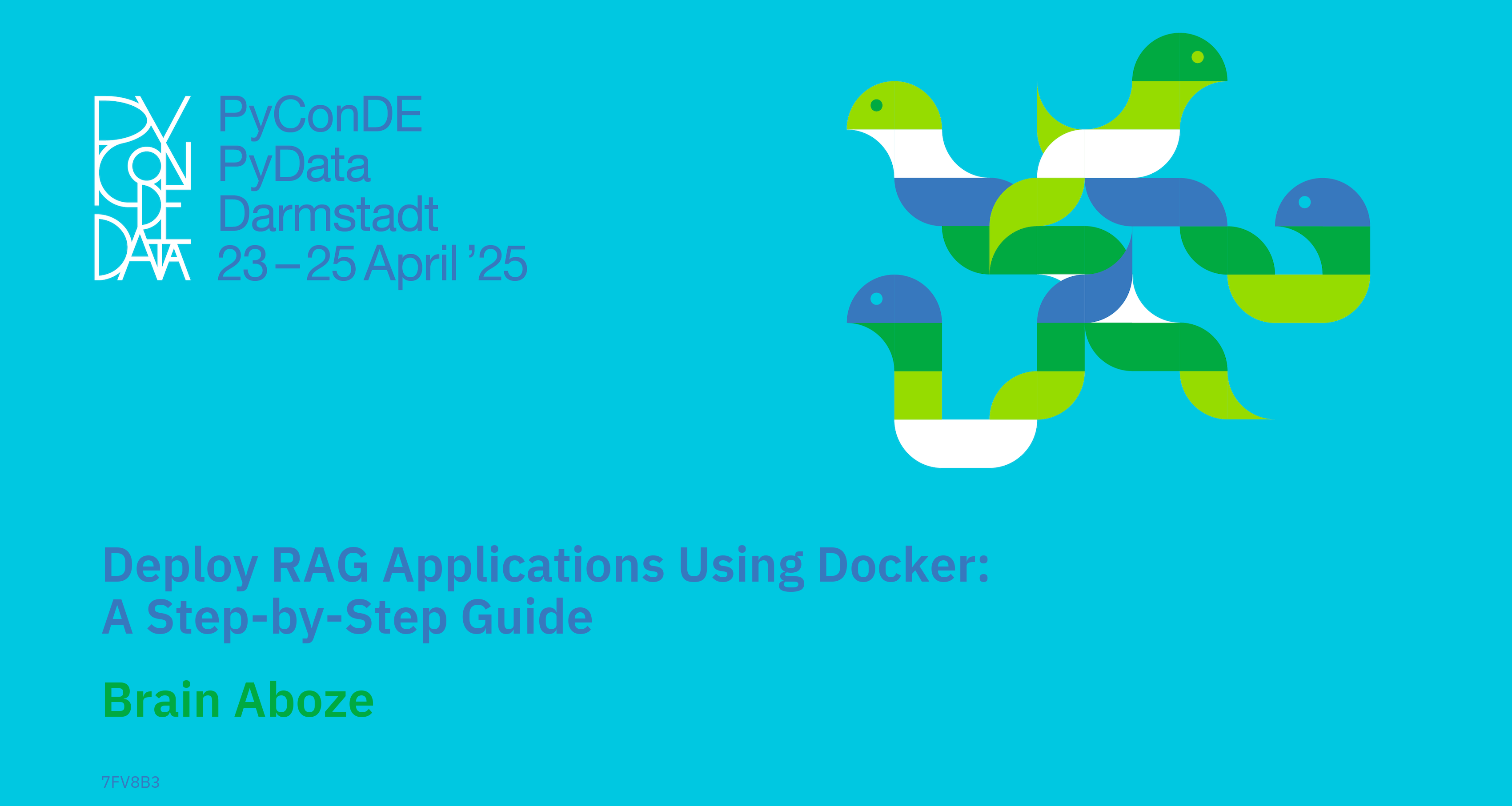Retrieval-Augmented Generation (RAG) applications are reshaping AI by combining real-time data retrieval with large language models to generate accurate, dynamic, and context-aware responses. This tutorial provides a comprehensive, step-by-step guide to building and deploying a RAG application using Docker. Attendees will learn how to create portable and consistent environments that simplify deployment, ensure compatibility, and streamline operations for RAG workflows.
The tutorial will begin with Setting Up the Environment, including installing Docker, creating a project directory, and managing API keys securely with .env files. Next, attendees will learn how to Build the RAG Application by writing Python scripts to integrate file parsing, embedding generation, and querying LLMs. We will also implement key functions for handling uploaded files, generating context-aware responses, and creating a Gradio-based user interface for seamless interaction. In the Creating the Dockerfile section, attendees will package the application into a Docker image by writing a Dockerfile to automate setup and expose the application interface. This is followed by Building and Running the Docker Image, where participants will learn to test the application locally by running it as a Docker container, using Docker commands to manage and troubleshoot the setup.
The tutorial will then cover Deploying to Hugging Face Spaces, a beginner-friendly cloud platform for hosting Docker-based applications. We will demonstrate how to set up a Hugging Face Space, configure API key secrets, and automate the deployment process for the RAG application. Finally, attendees will learn best practices for Monitoring and Optimizing the Application. The session will also include tips for optimizing Docker configurations to reduce image size and improve performance.
This tutorial is tailored for developers, data scientists, and ML engineers interested in deploying scalable and efficient RAG applications. Whether you're new to Docker or have experience with LLM-based workflows, this guide offers actionable insights and practical skills to streamline deployment processes. By the end of the session, participants will have a fully functional RAG application running in the cloud and the confidence to deploy similar solutions across various environments.
